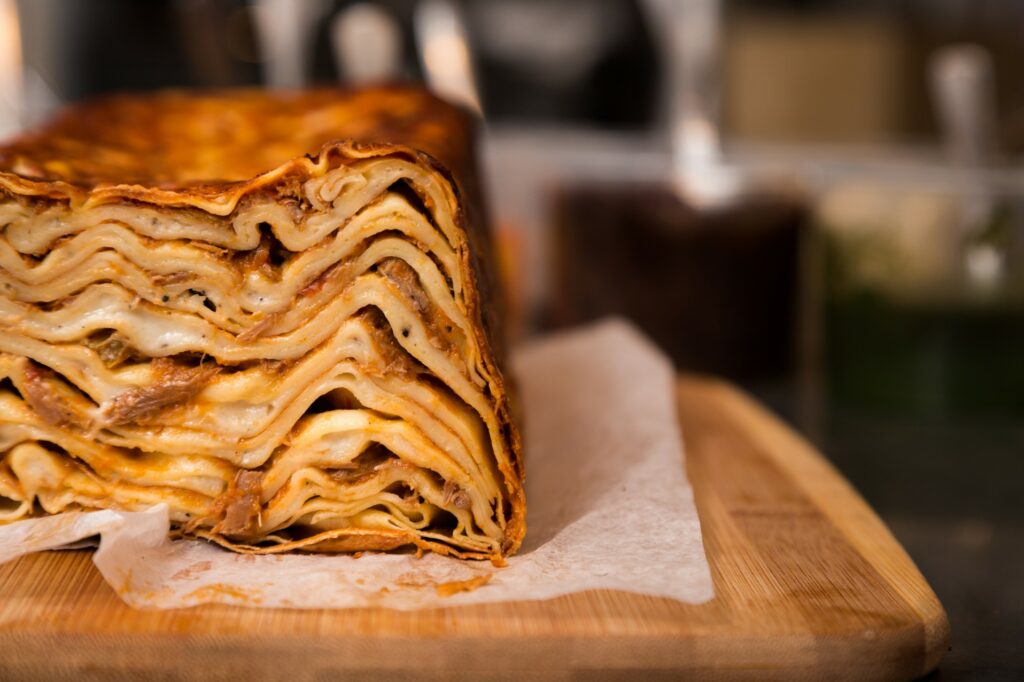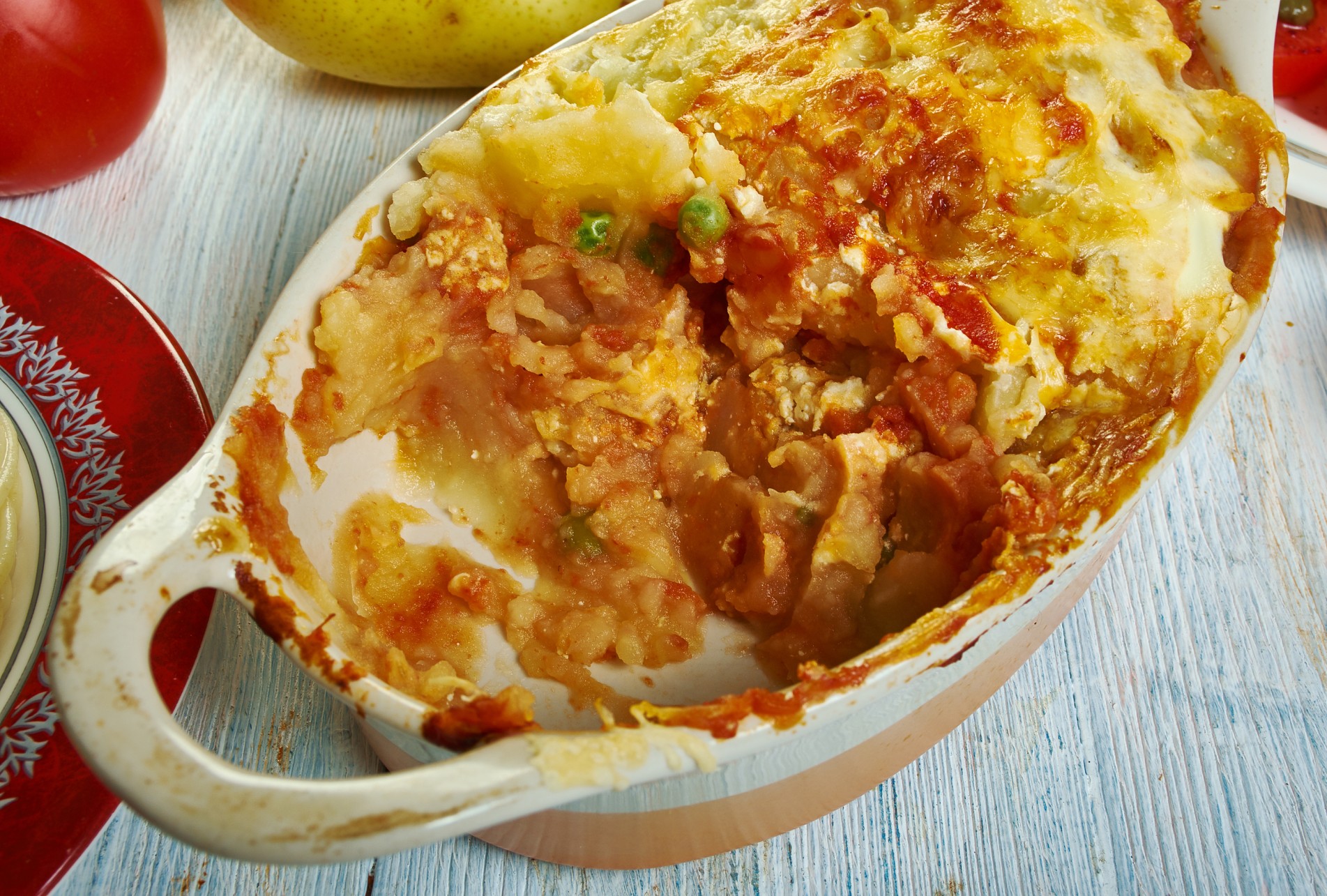Sformato, flan, timballo, and gattò are iconic Italian dishes even though, outside the borders of the Belpaese or the homes of Italians around the world, they are little known. While sharing some similarities in terms of preparation and presentation, each of these delicacies has very specific characteristics and origins, which we will explore together: there is plenty to say about sformato and its gang of savory friends, and there is a lot of goodness to enjoy, too!
Lo sformato
The word sformato translates to “unmolded” in Italian, which directly reflects the way this dish is presented. Its origins trace back to the Italian Renaissance when it was served as an elegant, molded custard filled with various ingredients such as vegetables, cheeses, and meats.
Initially a delicacy for the aristocracy, sformato evolved into a dish enjoyed across Italy, varying from region to region; versatile and popular from North to South, it can be made with a wide variety of ingredients, depending on the season and regional preferences. Common bases include puréed vegetables like spinach, pumpkin, or artichokes, which are then blended with béchamel sauce, eggs, and Parmesan cheese to form a smooth, rich mixture. Sformati are then baked until firm and golden: the result is a soft, custard-like creation that is often served with a light sauce or a crisp salad, and enjoyed as a primo (first course) or as a contorno (side dish) in a more elaborate meal.
Sformato‘s most famous variations come from Piedmont and Tuscany: in Piedmont, you might find sformato made with truffles or local cheeses while, in Tuscany, they often feature local vegetables like spinach.
Some trivia for you: in some historical Italian cookbooks, sformato recipes were considered a test of a chef’s skill due to their delicate balancing act of flavors and textures; they were also used, especially in the 19th century, as a way to present exotic ingredients.
Il flan
Flan is often associated with Spanish cuisine, but we eat it in Italy, too. However, here it is a savory dish. The Italian flan, or flan di verdure, is typically prepared with a mixture of seasoned vegetables and baked until it achieves a delicate, custard-like consistency, often enriched with local cheeses and eggs. Hang on, you may be saying: isn’t this just the same as sformato? In part, you are right, because flan and sformato have a lot in common, but the difference is in the texture, which is typically denser with a thicker consistency for a flan, due to the higher proportion of whole vegetables used.
The Italian flan is particularly liked for its simplicity and the spotlight it places on greens: ingredients typically include seasonal vegetables such as zucchini, carrots, or asparagus, which are first sautéed with herbs and then mixed with a binding agent like eggs and often ricotta or Parmesan cheese. The mixture is poured into molds and baked until set. The flans are usually served with a savory sauce like tomato or béchamel to enhance the vegetable flavors.
Of course, our flan has variations, primarily based on the available local vegetables: for instance, in the Veneto region, it’s often made with radicchio, which gives it a slightly bitter flavor. In Liguria, on the other hand, artichokes may be the vegetable of choice, capitalizing on their creamy texture and sweet, nutty flavor. Flan is commonly served as a starter or side dish, just like its cousin, the sformato.
Il timballo
Timballo, also known as timpano, is a pretty theatrical concoction, made famous to the international public by the film Big Night: it is, essentially, a baked dish consisting of pasta, rice, or potatoes, layered with meat, cheese, and vegetables, then encased in pastry, pasta dough, or vegetables. The dish’s origins are believed to be from Southern Italy, where extravagant presentations and rich ingredients were a way to show the wealth and status of the host.
Preparing a timballo is an elaborate affair: the base might be thin sheets of pasta, slices of eggplant, or even crepes, which line a deep dish. These layers encase a filling that could include combinations of ragù (meat sauce), peas, hard-boiled eggs, mozzarella, and sometimes even tiny meatballs. Once assembled, the timballo is baked until the exterior is crisp and the inside is bubbling. Often, it is served in slices to reveal its intricate layers.

In Abruzzo, a traditional timballo might be made with scrippelle, a type of crepe, layered with meatballs, chicken livers, and cheese. In Sicily, on the other hand, you’ll find timballo with eggplant and macaroni, and often baked in an ornate mold.
Now, timballo is a real showstopper, so it’s no surprise that it’s usually served as the main course, particularly during festive occasions and large family gatherings. Its textures are varied, from the soft or al dente pasta to the creamy fillings and crispy top layer: it’s a baroque dish, made to amaze and satisfy the largest of appetites.
A little curiosity about the name: it comes from the French timbale, and refers to the kettledrum used in orchestras. Likely, it was inspired by the dish’s drum-like appearance when unmolded.
Il Gattò
Gattò, short for gattò di patate, is a Neapolitan dish from Campania, and its name is derived from the French word gâteau (cake). So no, it has nothing to do with cats!
Introduced during the Bourbon rule, it is a savory potato cake, often layered with mozzarella, cured meat, and seasoned with local herbs, in a fusion of French and Italian culinary traditions that ended up becoming a staple of Neapolitan cuisine.
The gattò di patate, as its name points out, is primarily made from mashed potatoes enriched with eggs and Parmesan cheese, which provides a dense, cake-like texture. The filling usually features mozzarella cheese, diced ham or salami, and sometimes peas or mushrooms. The entire mixture is flavored with nutmeg and black pepper, then topped with breadcrumbs and dots of butter before baking. This results in a crispy crust on top of a creamy interior. Gattò is generally served as a main dish, often accompanied by a light salad to balance its richness. The flavor profile is bold, with the cheese and cured meats providing a savory depth that is quite satisfying and filling.
At Christmas, no household renounces its gattò in Naples, where some people still refer to it affectionately as gattò ‘mpacchiuse or “clumsy cake,” due to its rustic appearance and dense texture.






























